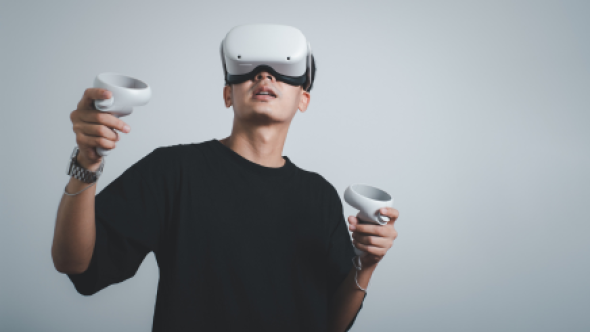In social innovation, students' unfamiliarity with the issues addressed (disability, poverty, immigration...) can lead to significant biases, stereotypes and cognitive distance that can impact the quality of the solutions proposed. To help them better grasp the theme, take the point of view of target populations ("perspective taking") and develop empathy, the teaching team called on companies with expertise in immersive technologies.
Last year, HandiReality, a company specializing in raising awareness of disabilities in the world of work, was on hand to immerse students in a virtual reality experience. Equipped with a virtual reality headset, they were able to slip into the daily lives of people with disabilities, and experience a range of professional contexts in which they are disabled. A playful and involving approach to open up their outlook on this theme. "I was working on hearing disability and virtual reality made me realize how difficult it is. I was able to realize that hearing aids weren't as good as I thought they were, it was a shock for me." explains Manon.
This year, it was Empathy Museum, an ASBL from England, who offered students an immersive experience, entitled "A mile in my shoes". For this activity, students were able to put on a pair of shoes that belonged to a person who had experienced a situation of vulnerability. This situation, they were able to discover through an audio testimonial. "These are stories that seem to come from fiction, I didn't expect it to be real. It made me realize the reality," explains student Naomie. "The stories were very poignant and open our minds. Wearing the shoes adds an extra dimension. You relive your experience and your life," adds student Claire.
This approach aims to resolve biases, increase empathy with target populations, and develop human-centered projects with significant impact, which has a major consequence on the level of student engagement and the quality of the work proposed.

